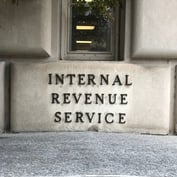The Internal Revenue Service (IRS) has posted drafts of two major new health law guides for taxpayers.
The guides are complicated enough to send some consumers who look at them straight to tax preparers.
One, the Instructions for Form 8965, gives consumers the information they need to claim exemptions from the Patient Protection and Affordable Care Act (PPACA) individual coverage mandate.
The 12-page guide includes one large table, for example, that shows where individuals should go to get hardship exemptions or coverage exemptions. The table shows that a taxpayer must go to a state exchange to document that the taxpayer qualifies for a hardship exemption because the taxpayer has no access to affordable coverage. The table shows that a consumer can get a coverage exemption based on incarceration simply by indicating that on a tax return.

Another table shows what types of health coverage qualify as being the kinds of “minimum essential coverage” (MEC) that can get a taxpayer out of paying the penalty to be imposed on many people who fail to have MEC.
A second PPACA guide, the Instructions for Form 8962, tries to explain what consumers should do about PPACA premium tax credits.








 September 19, 2014 at 01:11 PM
September 19, 2014 at 01:11 PM










